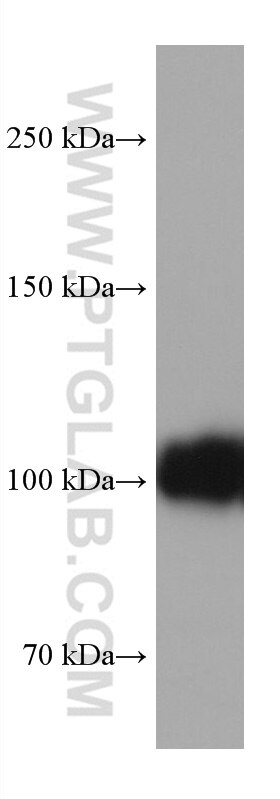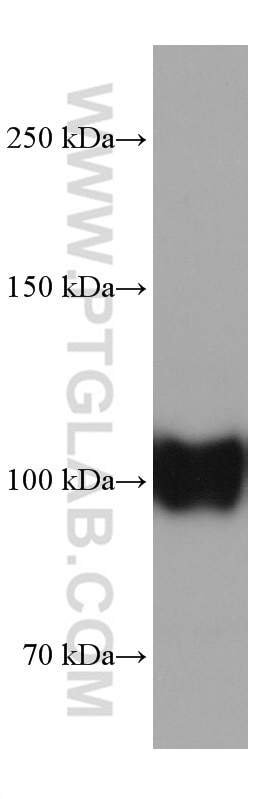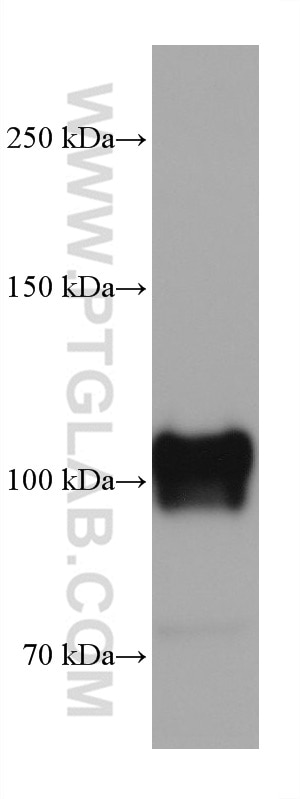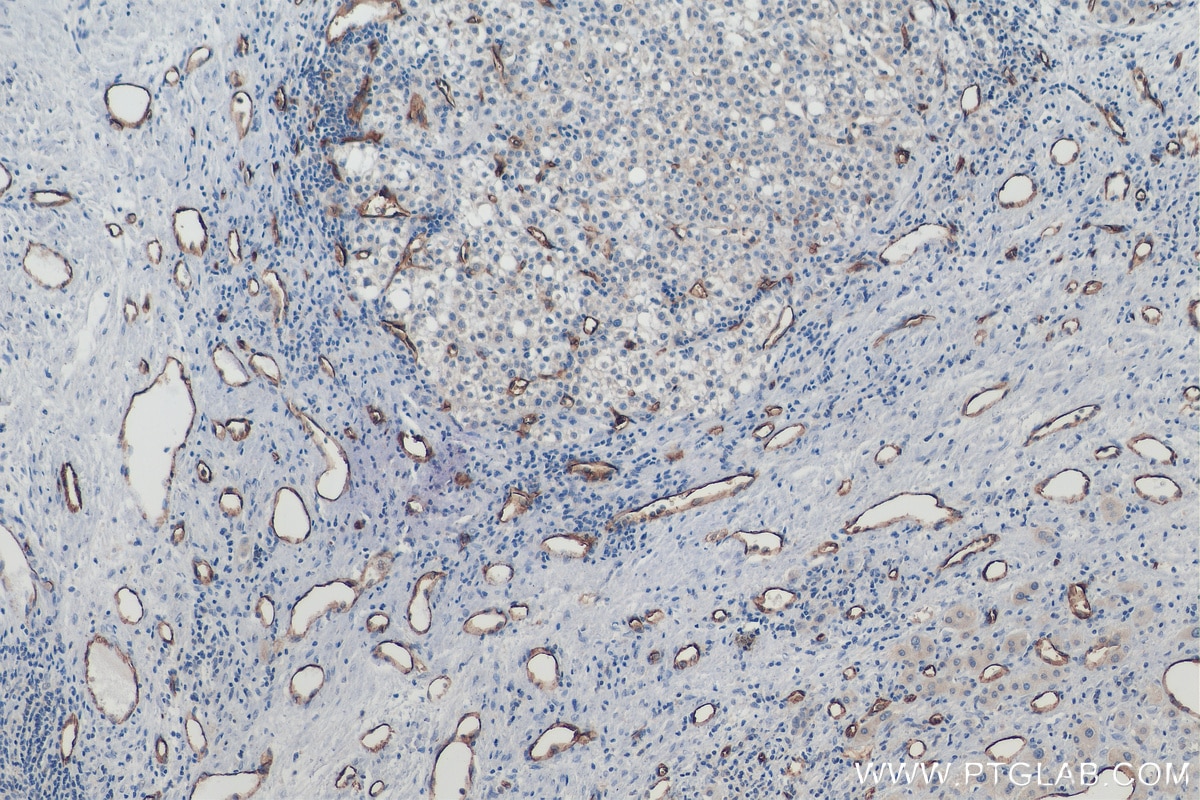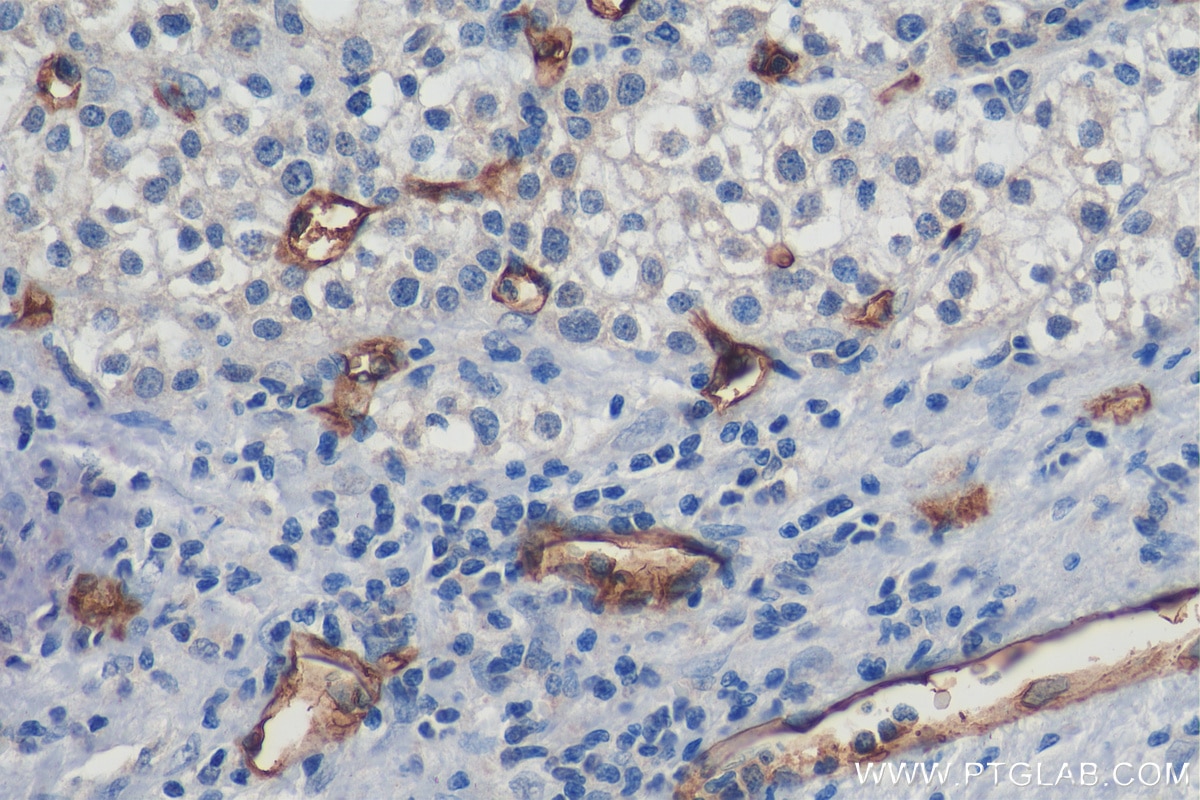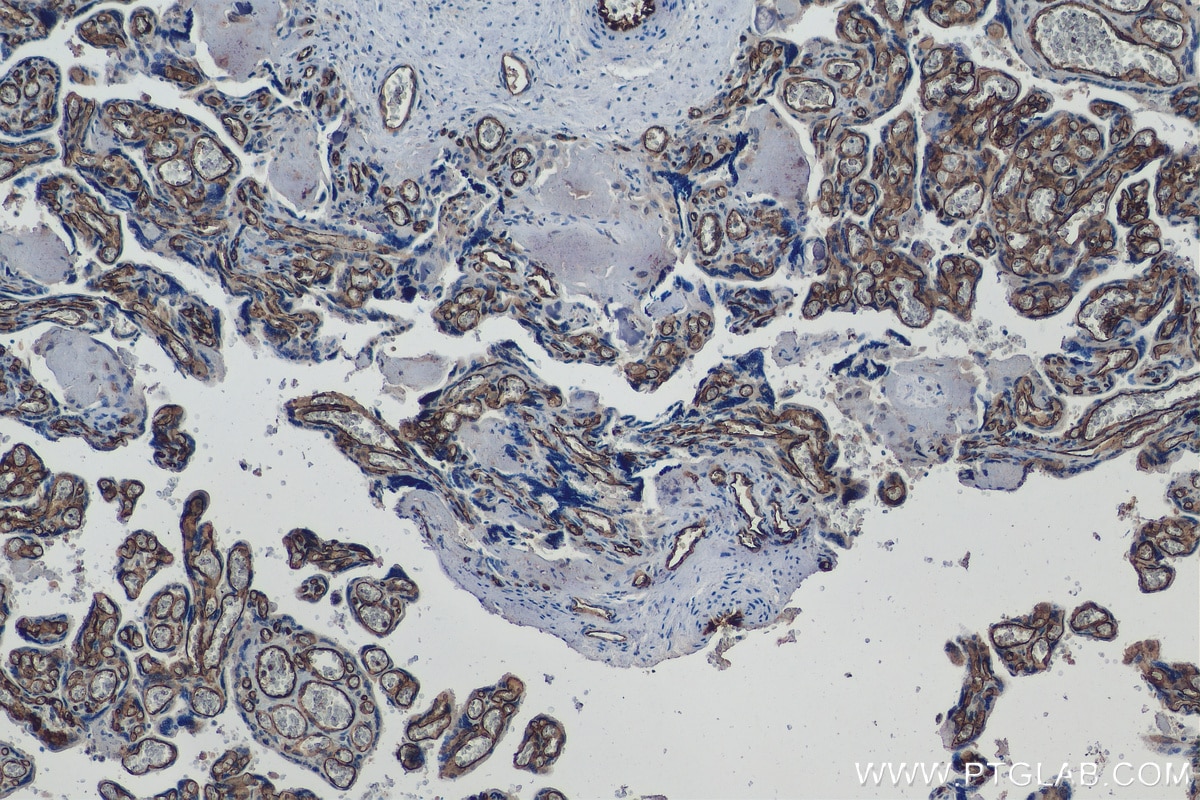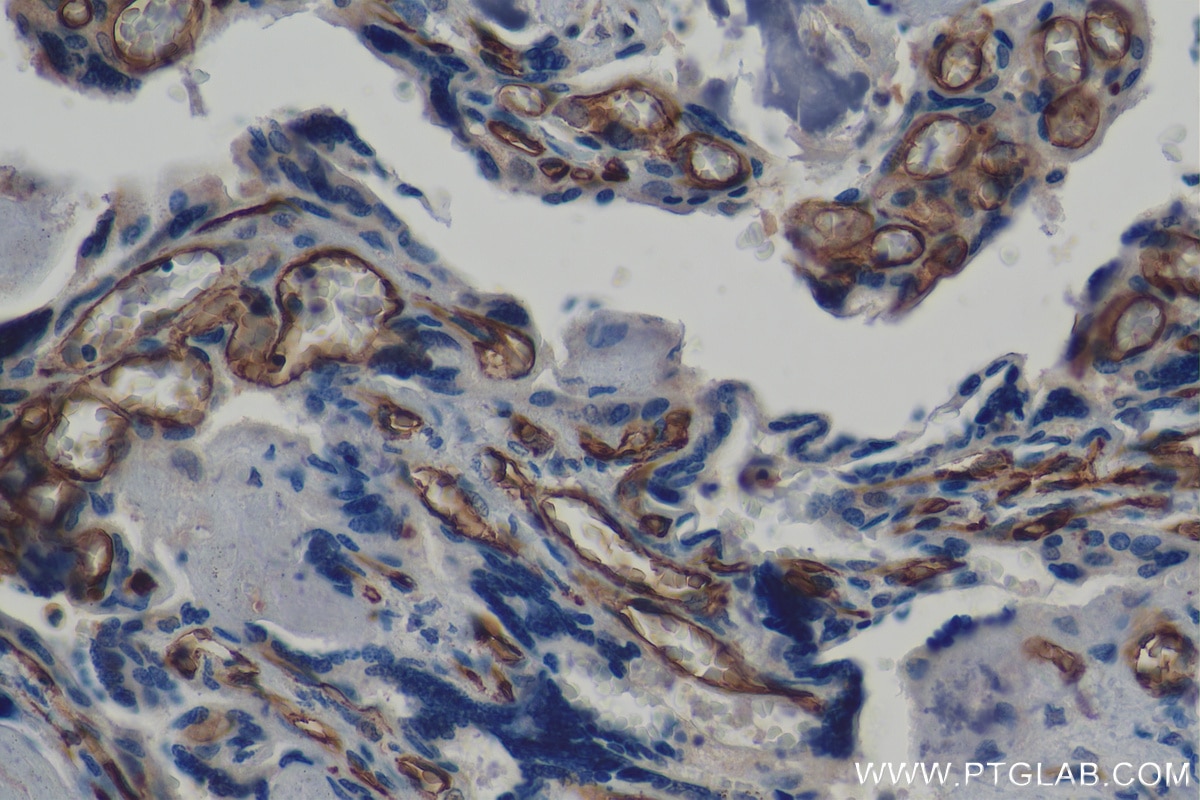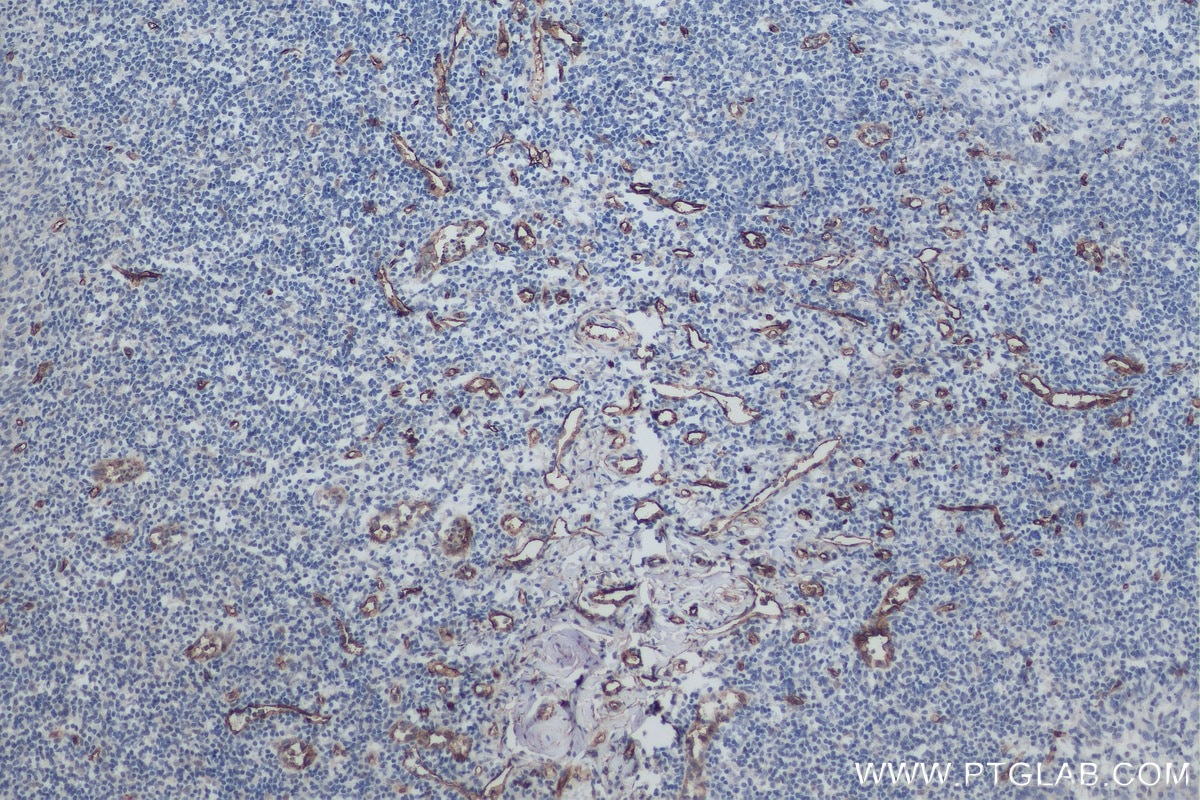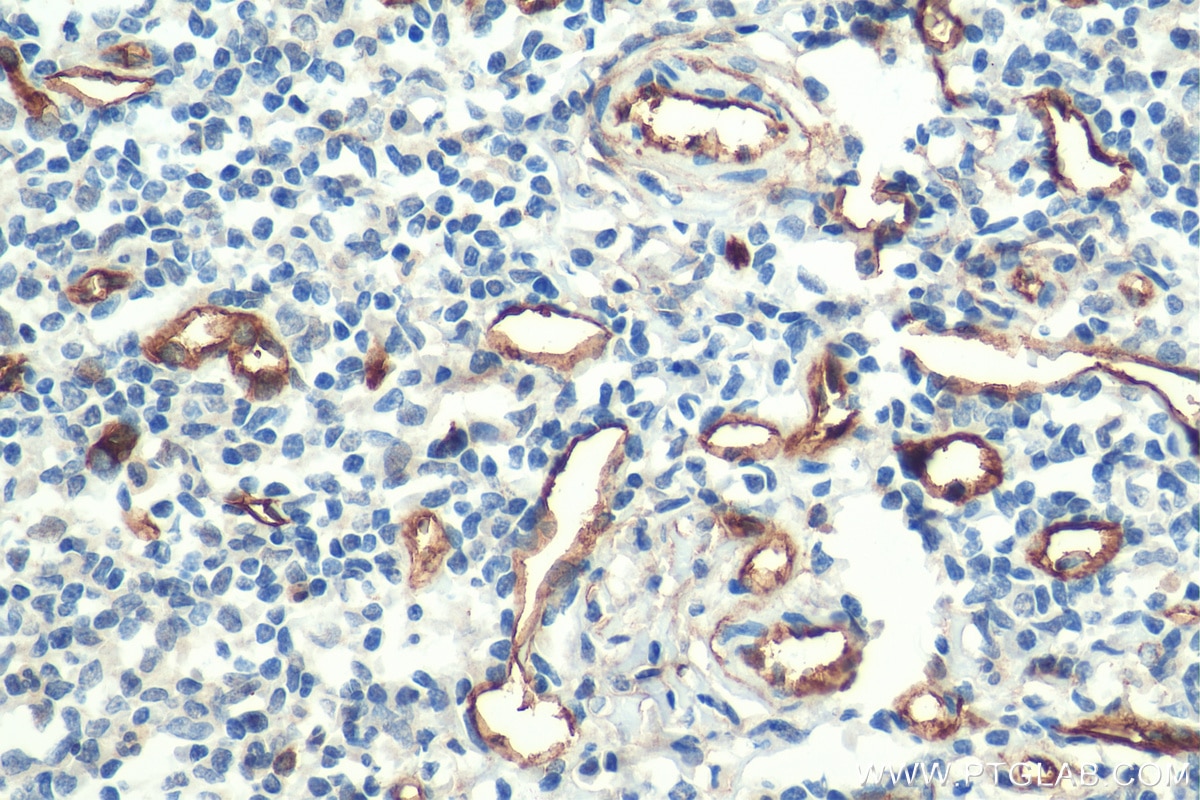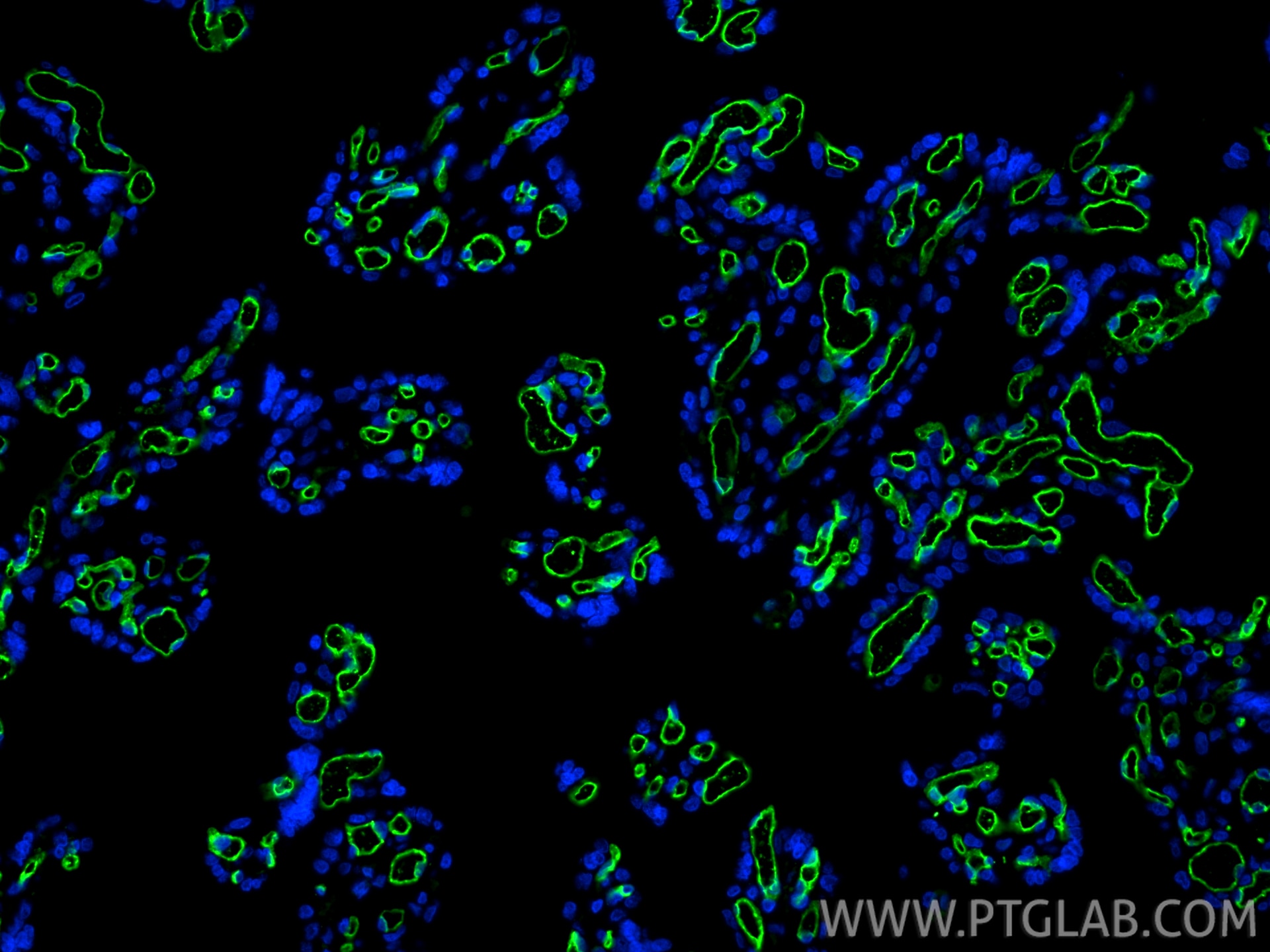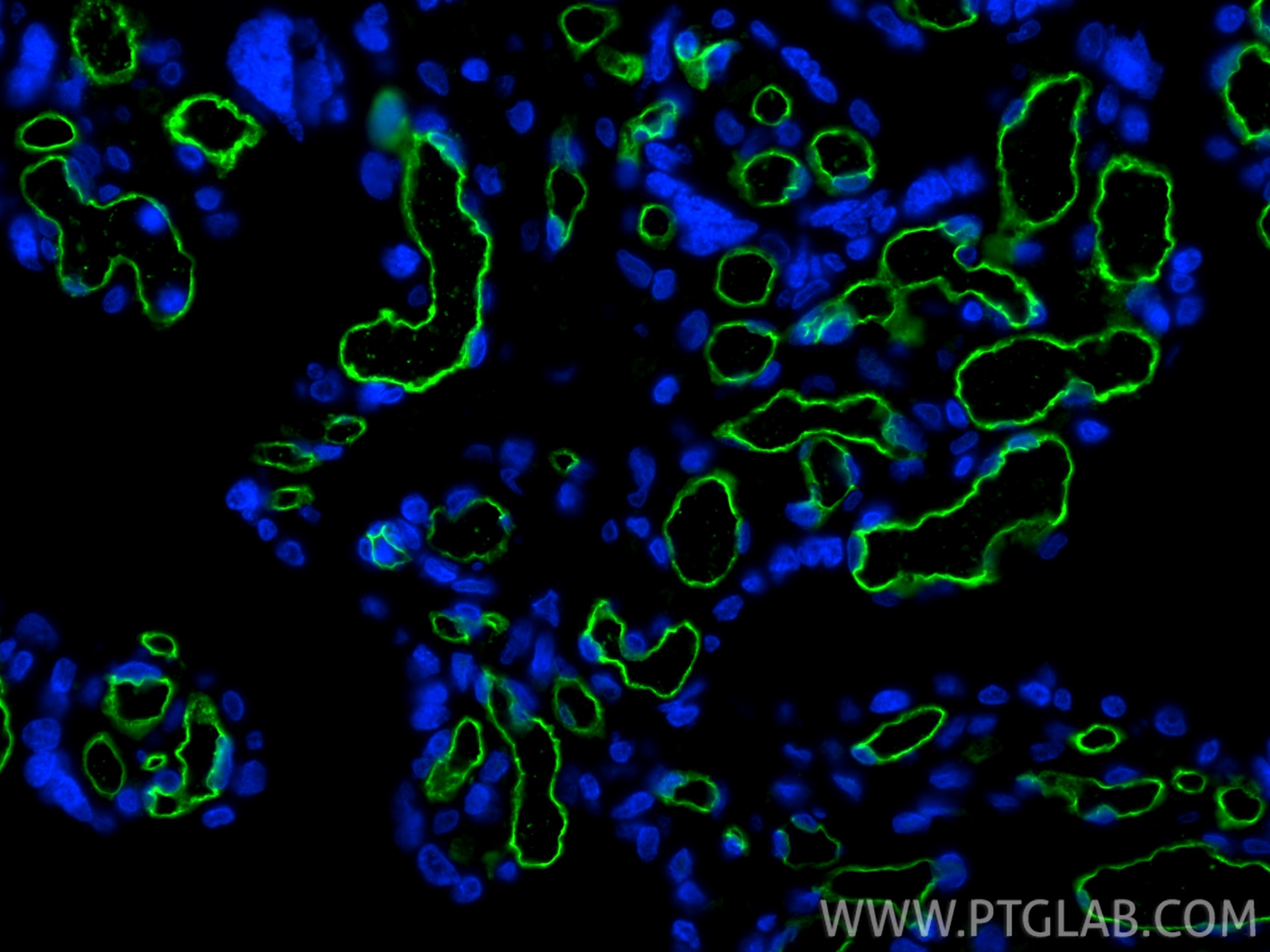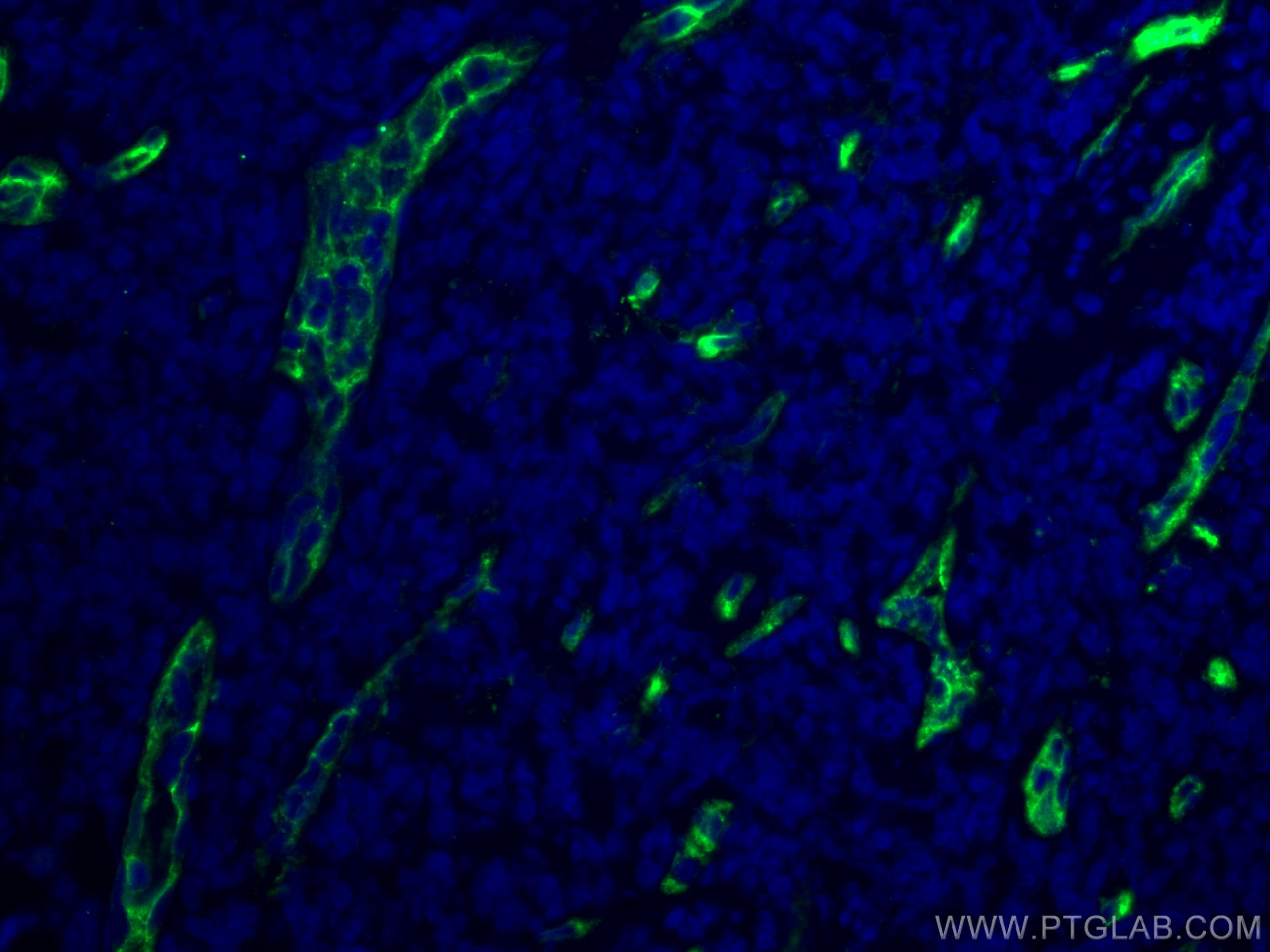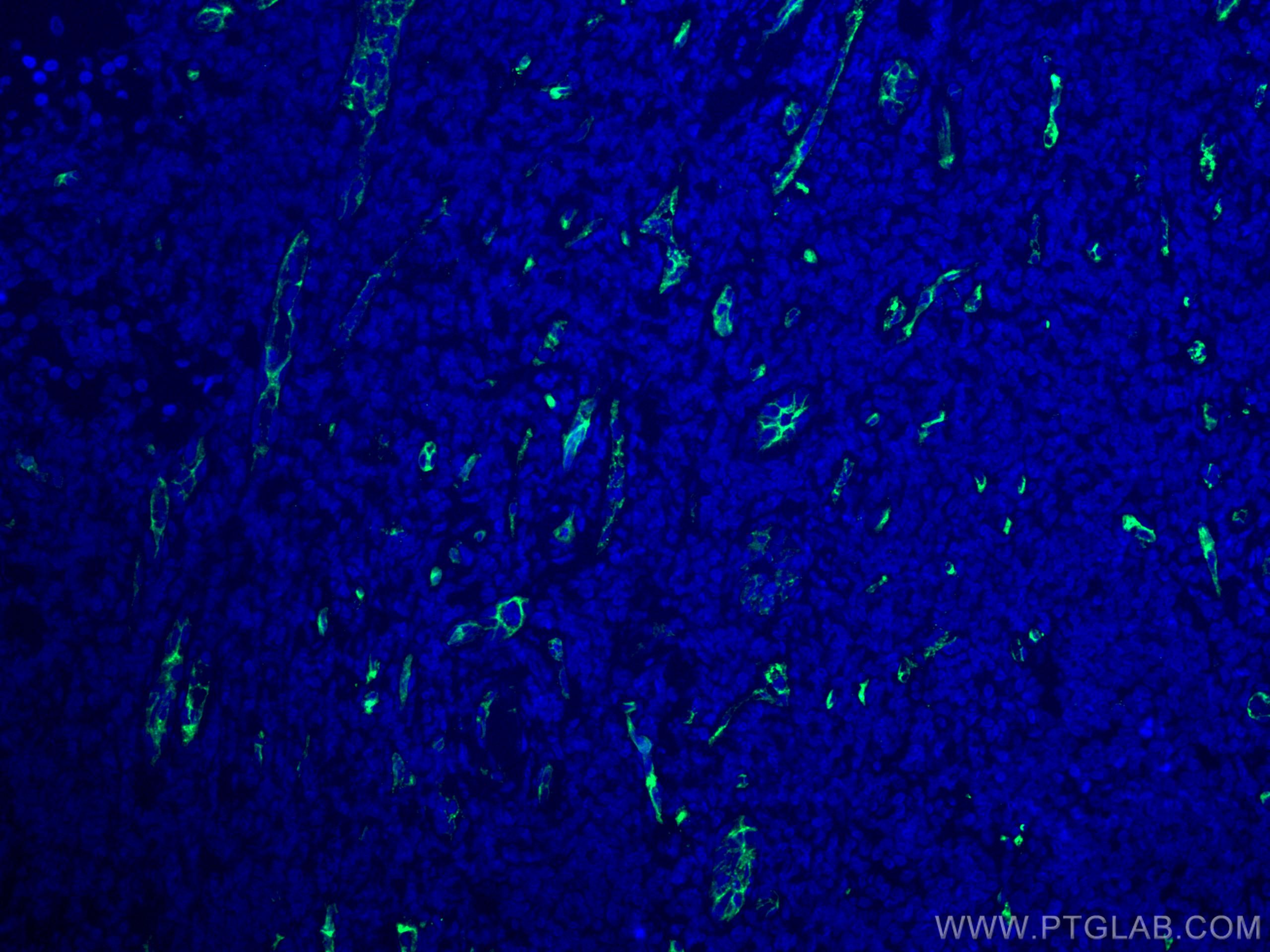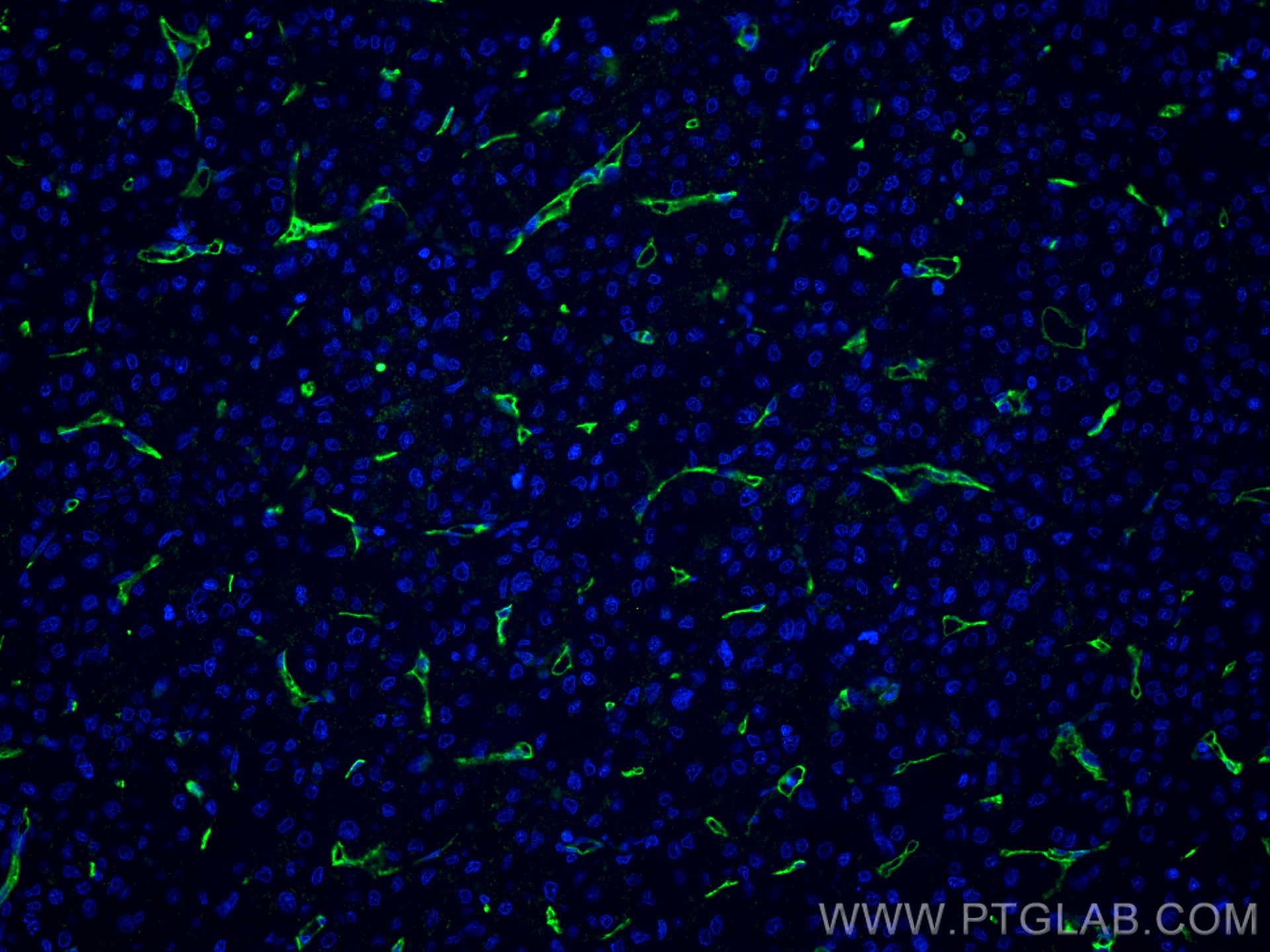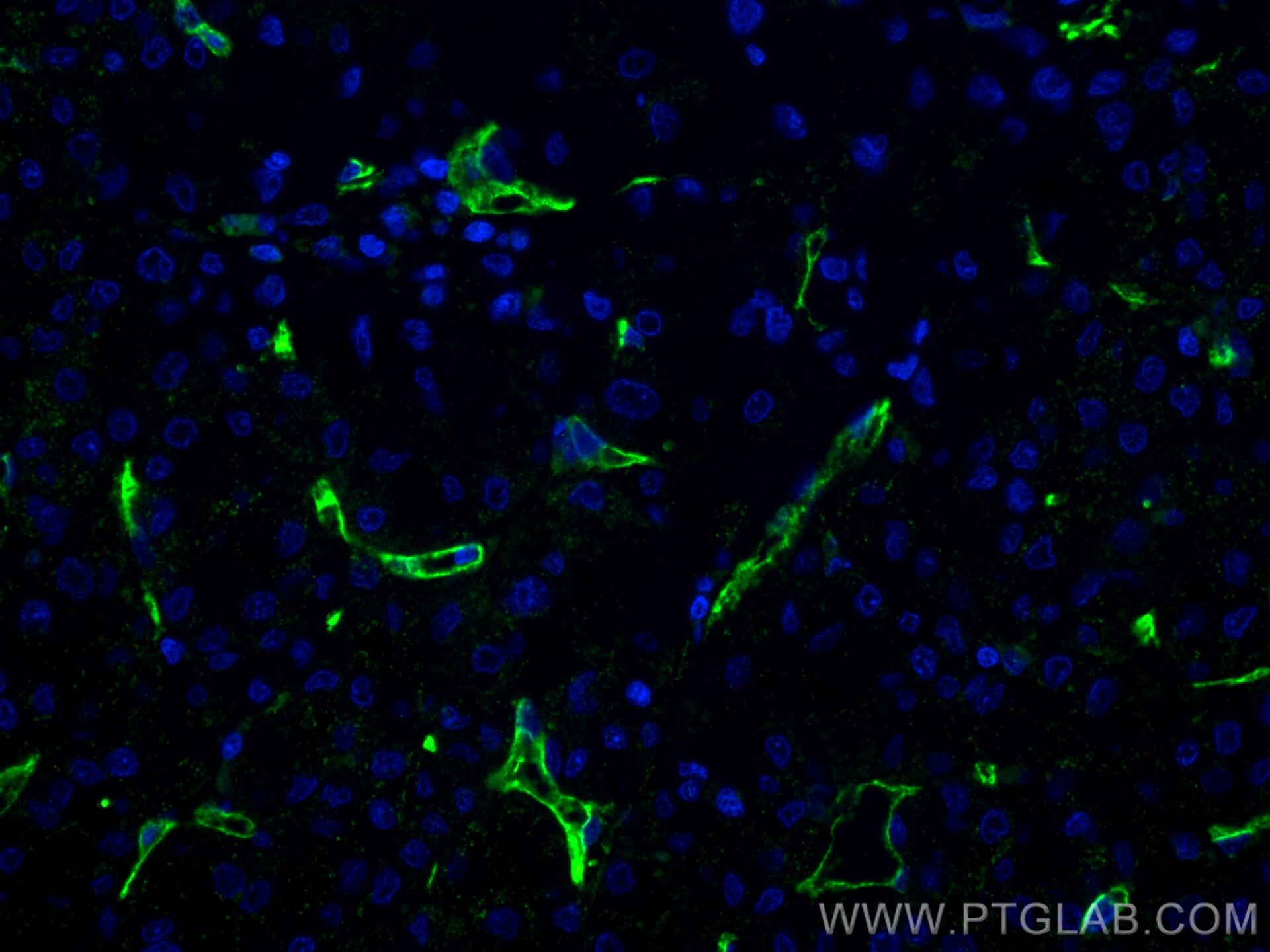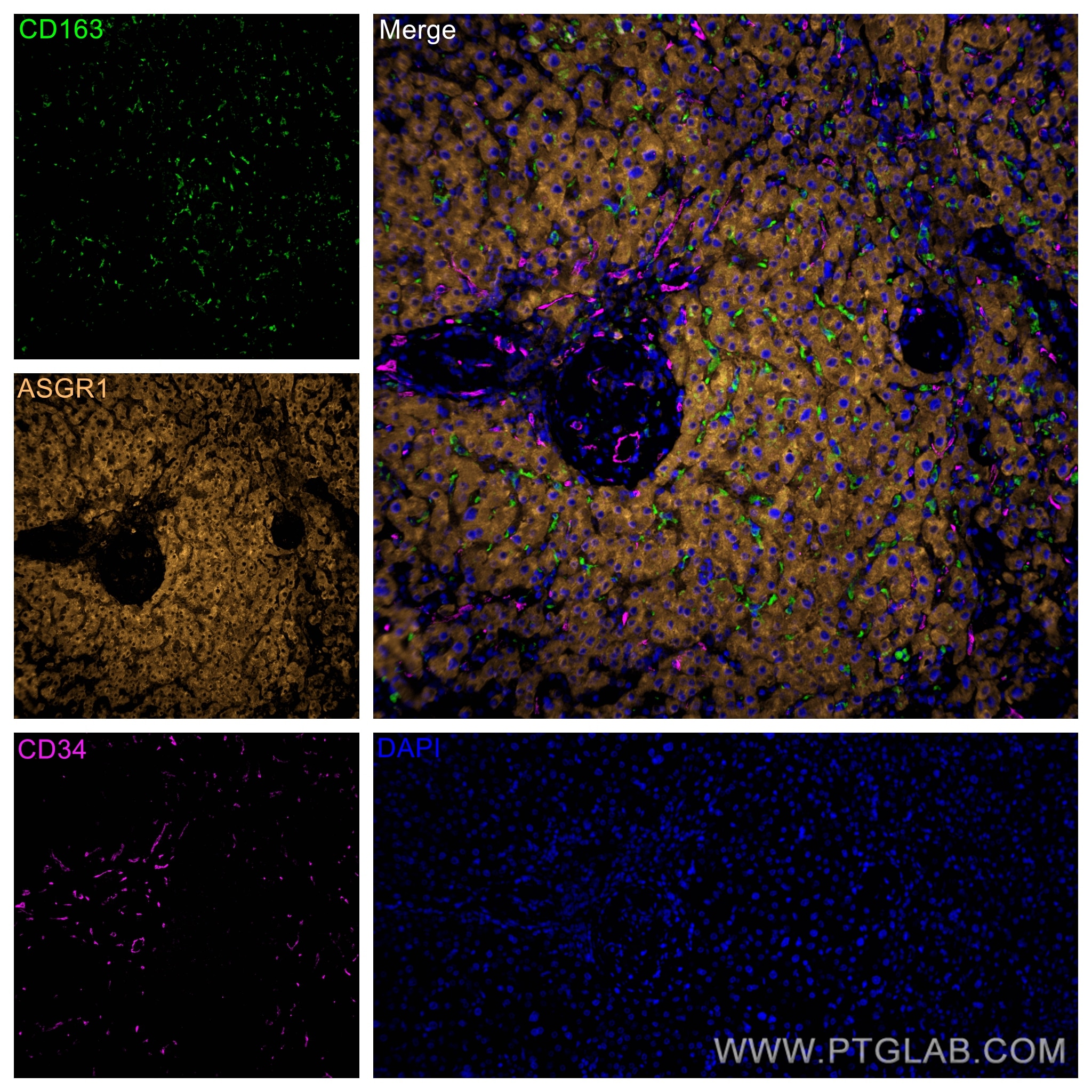Anticorps Monoclonal anti-CD34
CD34 Monoclonal Antibody for WB, IHC, IF-P, ELISA
Hôte / Isotype
Mouse / IgG2b
Réactivité testée
Humain
Applications
WB, IHC, IF-P, ELISA
Conjugaison
Non conjugué
CloneNo.
3C8G12
N° de cat : 60180-1-Ig
Synonymes
Galerie de données de validation
Applications testées
| Résultats positifs en WB | tissu placentaire humain, tissu testiculaire humain, tissu utérin humain |
| Résultats positifs en IHC | tissu de cancer du foie humain, tissu d'amygdalite humain, tissu placentaire humain il est suggéré de démasquer l'antigène avec un tampon de TE buffer pH 9.0; (*) À défaut, 'le démasquage de l'antigène peut être 'effectué avec un tampon citrate pH 6,0. |
| Résultats positifs en IF-P | tissu placentaire humain, tissu d'amygdalite humain, tissu de cancer du foie humain, tissu hépatique humain |
Dilution recommandée
| Application | Dilution |
|---|---|
| Western Blot (WB) | WB : 1:1000-1:4000 |
| Immunohistochimie (IHC) | IHC : 1:2500-1:10000 |
| Immunofluorescence (IF)-P | IF-P : 1:200-1:800 |
| It is recommended that this reagent should be titrated in each testing system to obtain optimal results. | |
| Sample-dependent, check data in validation data gallery | |
Applications publiées
| IHC | See 13 publications below |
| IF | See 8 publications below |
Informations sur le produit
60180-1-Ig cible CD34 dans les applications de WB, IHC, IF-P, ELISA et montre une réactivité avec des échantillons Humain
| Réactivité | Humain |
| Réactivité citée | Humain |
| Hôte / Isotype | Mouse / IgG2b |
| Clonalité | Monoclonal |
| Type | Anticorps |
| Immunogène | CD34 Protéine recombinante Ag5996 |
| Nom complet | CD34 molecule |
| Masse moléculaire calculée | 41 kDa |
| Poids moléculaire observé | 105 kDa |
| Numéro d’acquisition GenBank | BC039146 |
| Symbole du gène | CD34 |
| Identification du gène (NCBI) | 947 |
| Conjugaison | Non conjugué |
| Forme | Liquide |
| Méthode de purification | Purification par protéine A |
| Tampon de stockage | PBS with 0.02% sodium azide and 50% glycerol |
| Conditions de stockage | Stocker à -20°C. Stable pendant un an après l'expédition. L'aliquotage n'est pas nécessaire pour le stockage à -20oC Les 20ul contiennent 0,1% de BSA. |
Informations générales
CD34 is a 105- to 120-kDa glycophosphoprotein expressed on the majority of hematopoietic stem/progenitor cells, bone marrow stromal cells, capillary endothelial cells, embryonic fibroblasts, and some nerve tissue. CD34 is a commonly used marker for identifying human hematopoietic stem/progenitor cells and mediates cell adhesion and lymphocyte homing by binding L-selectin and E-selectin ligands. CD34 is also one of the best negative selection markers for characterizing and/or isolating human MSCs from bone marrow and other sources. Along with other positive selection markers (such as CD29, CD44, CD90, CD105 and CD166), negative selection markers (such as CD34 and CD45) are used for MSC identification. The calculated molecular mass of human CD34 is 41 kDa, various forms with different molecular weights may be produced due to different glycosylation patterns and alternative splicing (PMID: 24375067; 15750786).
Protocole
| Product Specific Protocols | |
|---|---|
| WB protocol for CD34 antibody 60180-1-Ig | Download protocol |
| IHC protocol for CD34 antibody 60180-1-Ig | Download protocol |
| IF protocol for CD34 antibody 60180-1-Ig | Download protocol |
| Standard Protocols | |
|---|---|
| Click here to view our Standard Protocols |
Publications
| Species | Application | Title |
|---|---|---|
Gastroenterology Proteomic characterization identifies clinically relevant subgroups of gastrointestinal stromal tumors | ||
Front Immunol Thrombotic microangiopathy mediates poor prognosis among lupus nephritis via complement lectin and alternative pathway activation | ||
Front Bioeng Biotechnol Primary Repair for Treating Acute Proximal Anterior Cruciate Ligament Tears: A Histological Analysis and Prospective Clinical Trial. | ||
Exp Cell Res Nrf2 activation is involved in osteogenic differentiation of periodontal ligament stem cells under cyclic mechanical stretch. | ||
Biomed Mater The additive effects of photobiomodulation and bioactive glasses on enhancing early angiogenesis. | ||
Avis
The reviews below have been submitted by verified Proteintech customers who received an incentive for providing their feedback.
FH Reyes (Verified Customer) (09-24-2025) | CD34 (in green) failed to mark specifically the blood vessels of the FFPE human brain cortex tissue. It seemed to mark some blood vessels, missing others. But it marked highly the background of the tissue.
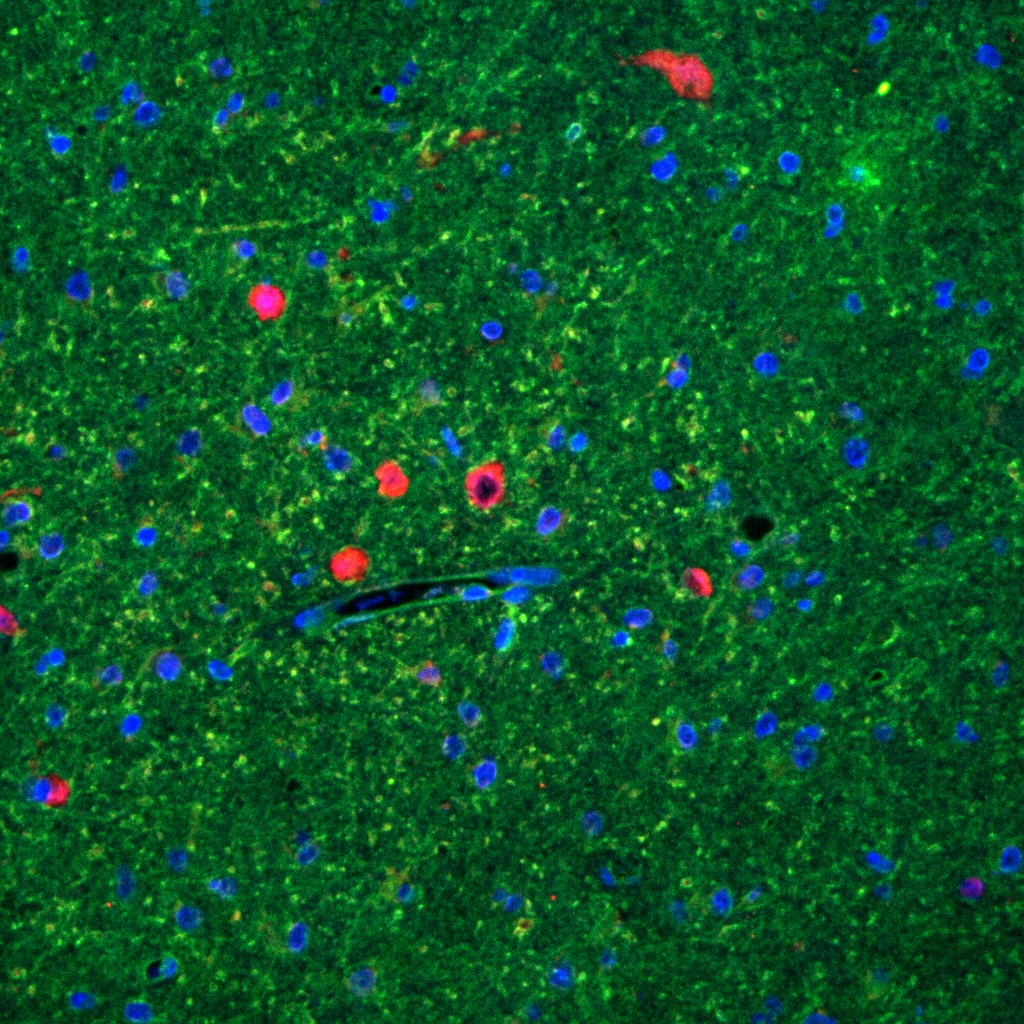 |
